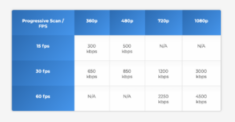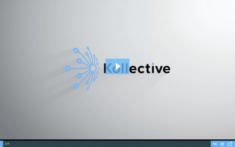What is Kollective EdgeCache?
What is Kollective EdgeCache?
It goes without saying that we have all become more flexible over the last year and a half, especially when it comes to how we work. With the rise of the hybrid workforce, it means that the infrastructure required to support this new working model needs to be flexible as well. Kollective has once again innovated and added new functionality to its platform to ensure you can collaborate anywhere in the world at any time, no matter where you are in the network. Introducing Kollective EdgeCache , a light and scalable addition to the Kollective platform. EdgeCache delivers video to even the hardest-to-reach locations in your network, ensuring that no one in your company is left behind when it comes to collaboration and communication.
Kollective EdgeCache is the newest addition to Kollective’s ECDN Platform . It is a software-defined video caching solution that is placed within your existing edge infrastructure to improve the efficiency of your network, reduce bandwidth usage, and bring content closer to the end user. EdgeCache stores your live and on-demand video (VOD) behind the corporate firewall to deliver content quickly and securely across your network.
In this article, we detail how EdgeCache benefits businesses by reviewing its features and use cases. We will also examine how the addition of EdgeCache to Kollective’s suite of solutions further expands the already extensive list of capabilities of the Kollective Platform. Continue reading to find out how EdgeCache can improve your corporate communications.
What are the Use Cases for Kollective EdgeCache?
The dynamic nature of network topologies requires businesses to be more flexible than ever to ensure that all employees have the same level of coverage regardless of their location. In this way, EdgeCache is a natural extension of our baseline Browser-Based Peering solution. EdgeCache integrates seamlessly with Kollective’s solutions, covering a series additional use cases your network is likely to encounter.
China Offices
Companies with business ties or operations in China understand the inherent difficulties that come with delivering content to the country. There are only three ISPs that control the internet in China, with limited interconnectivity between them. This leads to inconsistent network performance including high latency, packet loss, and frequent congestion spikes.
In addition, their active filtering and monitoring through the Great Firewall of China often creates delays, slowing traffic that originates from other countries. Installing EdgeCache inside your network in China allows users to effectively bypass this firewall. Content is stored within the firewall and end users can source both live and on demand video (VOD) directly from the EdgeCache, reducing the load on your internet gateway and more efficiently delivering content to your employees.
Backhauled Networks
To keep operations secure, many enterprises backhaul 100% of network traffic from all offices to centralized data centers where data can be securely inspected before accessing the internet. Businesses often suffer from reduced network efficiency when backhauling traffic from distant office locations. This can be a significant issue for companies with many remote offices like those in the manufacturing and energy industries. Installing Kollective EdgeCache in these data centers can reduce the amount of duplicate content pulled from the internet while also working in parallel with in-office peering to bring content closer to your network’s edge while dramatically reducing the traffic through your internet gateway.
Remote VPN Users
Split tunnelling can alleviate bandwidth bottlenecks by giving companies control over what data they encrypt and what data they allow to travel faster, unencrypted. Oftentimes, security-conscious organizations do not permit split tunnelling for their remote workers across the virtual private network (VPN). This results in bandwidth constraints at the VPN and regional breakout locations, increasing network congestion. Installing Kollective EdgeCache in strategic locations allows remote workers to access content directly from the EdgeCache. This maintains a high degree of security while reducing bandwidth requirements and end-to-end latency.
What are the Benefits of Kollective EdgeCache?
Flexible
Supplementing your current ECDN solutions with EdgeCache affords your business greater flexibility with content delivery. Deploy EdgeCache to offices in China to effectively bypass the “Great Firewall”. Use EdgeCache to quickly and securely deliver content through backhaul networks.
Scalable
There’s no limit to the number of EdgeCache’s that can be deployed on your network. Each EdgeCache supports up to 1,000 users. Work with our experts to determine how many EdgeCache’s your network needs so that content can be effectively delivered to your workforce.
Efficient
EdgeCache acts as a proxy that focuses streaming traffic to a centralized location. Use EdgeCache to aggregate the flow of content and reduce the strain on your internet gateway.
Secure
EdgeCache has been developed with the strictest security measures in mind to provide your business with privacy and peace of mind. EdgeCache data is fully encrypted for firewalled locations.
Support
Full support for live video and on-demand video (VOD) streams. EdgeCache supplies local access to everything from live events and townhalls to on-demand training videos, providing flawless quality regardless of stream type. EdgeCache also integrates with top video platforms, including Teams, Notified, Touchcast, Kaltura, WTV, Panopto, Intrado, etc.
Analytics
EdgeCache integrates with our advanced analytics platform, Kollective IQ , providing real-time insights needed to keep your employees engaged and your business operating smoothly.
Experience Complete Coverage with EdgeCache
Take the next step on your journey towards complete coverage with Kollective EdgeCache. From quickly serving video to remote workers and remote offices to efficiently delivering content to China, EdgeCache solves for an array of common use cases faced by the world’s largest brands.
The introduction of EdgeCache further expands Kollective’s already extensive list of capabilities. Kollective’s Platform is the only unified ECDN solution with coordinated delivery options that can solve any issues businesses experience with their network. Kollective is also the only ECDN platform with logic connecting peering and caching solutions. This means that EdgeCache can work with our other solutions to dynamically determine the most fast and efficient content delivery mechanism to keep your employees connected and engaged. Our platform provides complete coverage for simple to complex use cases, ensuring that content is quickly and securely delivered without delay.
Kollective’s ECDN Platform Solves Any Network
Kollective’s wide range of solutions and the logic that connects them under a single architecture allows our platform to alleviate the concerns of any network in ways our competition cannot. Kollective provides simple to complex networks with complete coverage, dynamically assessing and adjusting to changes in your network to provide the most optimal delivery path for your content needs.
The post What is Kollective EdgeCache? appeared first on Kollective Technology .









